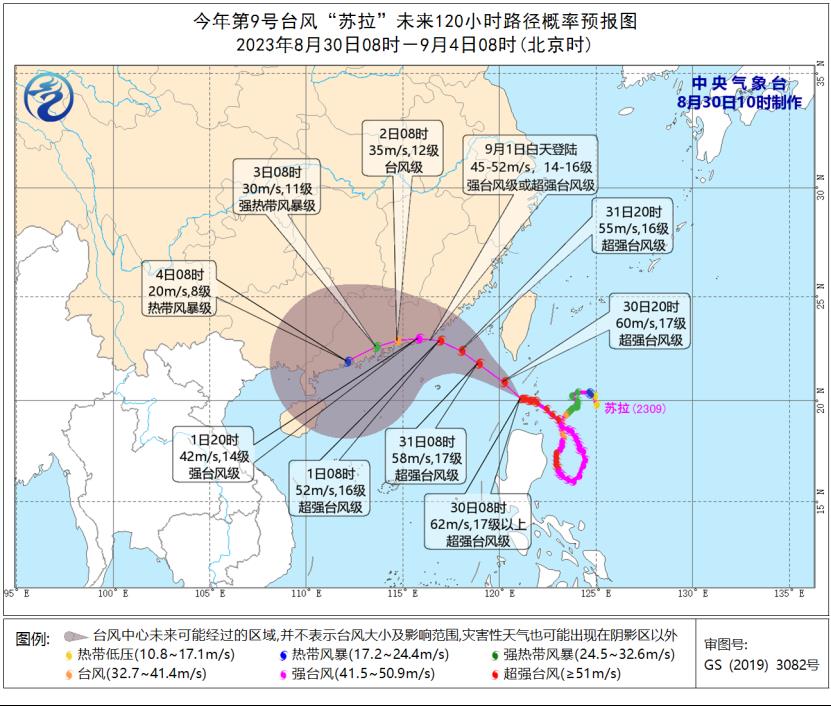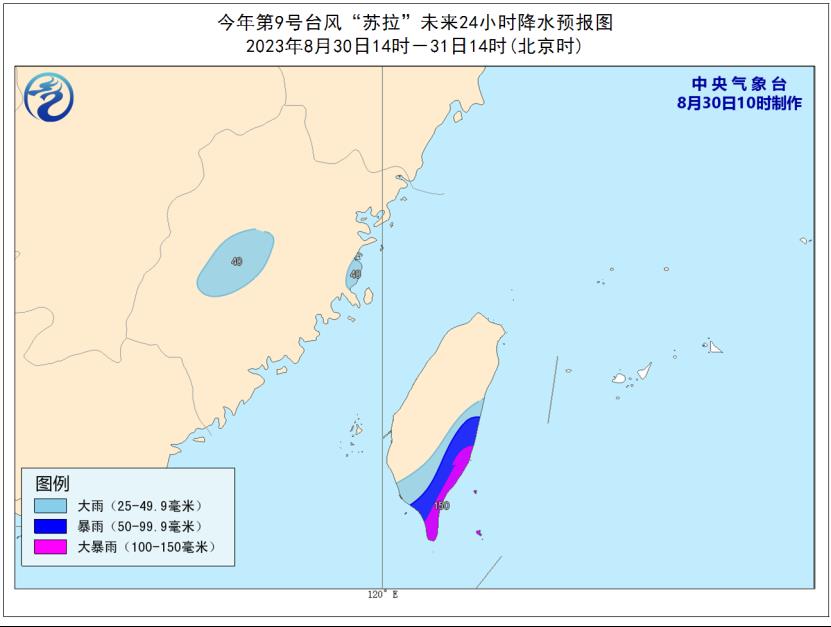The Central Meteorological Observatory issued an orange warning for typhoon.
CCTV News:The Central Meteorological Observatory issued an orange warning for typhoon at 10: 00 on August 30th. The center of Typhoon Sura (super typhoon) No.9 this year is located at 9: 00 am today (30th) on the sea surface about 580 kilometers south-east of Huilai, Guangdong Province, which is 20.2 degrees north latitude and 121.0 degrees east longitude. The maximum wind force near the center is above 17 (62m/s), and the minimum pressure at the center is 915 hectopascals.
It is estimated that "Sura" will move to the northwest at a speed of 10-15 kilometers per hour, move into the northeastern South China Sea on the night of the 30th or the early morning of the 31st, and gradually approach the coastal areas from eastern Guangdong to southern Fujian. It may land on the above coastal areas during the day on September 1st (strong typhoon level or super typhoon level, 45-52m/s, 14-16), or it may move to the south-west direction in the coastal areas of eastern Guangdong.
Gale forecast:From 14: 00 on August 30 to 14: 00 on August 31, there will be strong winds of 6-8 grades and gusts of 9-10 grades in bashi channel, Taiwan Province Strait, the sea south of the east of Taiwan Province, the northeastern South China Sea, the coastal areas of Fujian, the southern coast of Taiwan Province Island and the coastal areas of central and eastern Guangdong. Among them, the winds in bashi channel and the easterly waters of the northeastern South China Sea are 9-11 grades, and the winds in some sea areas can reach 12-13 grades.
Precipitation forecast:From 14: 00 on August 30 to 14: 00 on August 31, there were heavy rains in parts of central and eastern Fujian, eastern and southern Taiwan Province Island, and local heavy rains (100-150 mm).
Defense guide:
1. The government and relevant departments shall, in accordance with their duties, do a good job in typhoon prevention and emergency rescue.
2. Water operations and passing ships in relevant waters should return to Hong Kong to take shelter from the wind, strengthen port facilities, and prevent ships from anchoring, grounding and collision.
3. Stop large-scale indoor and outdoor gatherings and dangerous outdoor operations such as high altitude.
4. Reinforce or dismantle structures that are easy to be blown by the wind. Personnel should not go out at will. They should stay in windproof and safe places as far as possible, so as to ensure that the elderly and children stay in the safest place at home, and the dangerous people will be transferred in time. When the typhoon center passes by, the wind will decrease or stay still for a period of time. Remember that the strong wind will suddenly blow and you should continue to stay in a safe place to avoid the wind.
5. Relevant areas should pay attention to prevent flash floods and geological disasters that may be caused by heavy precipitation.


